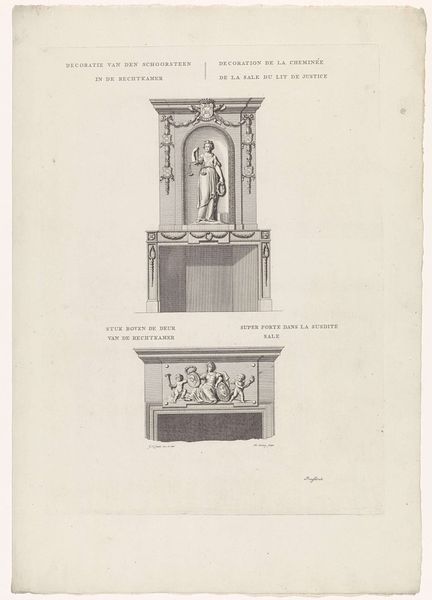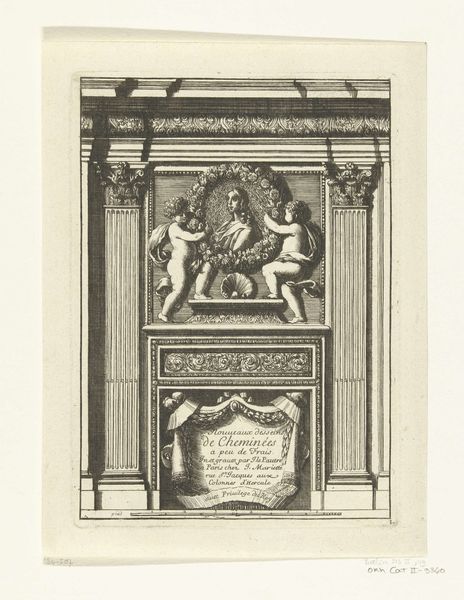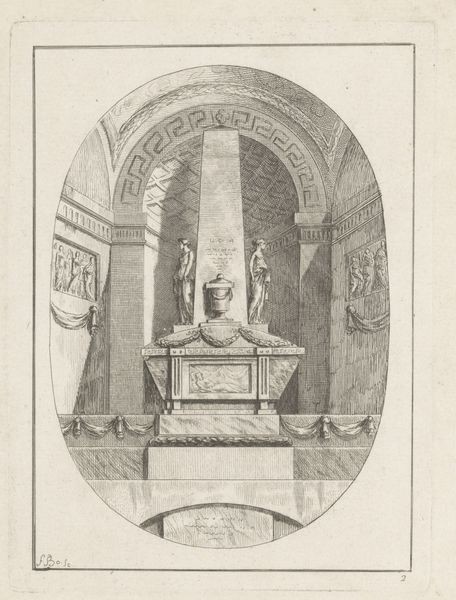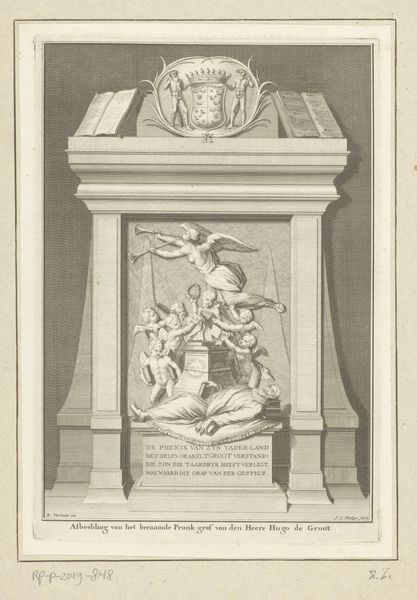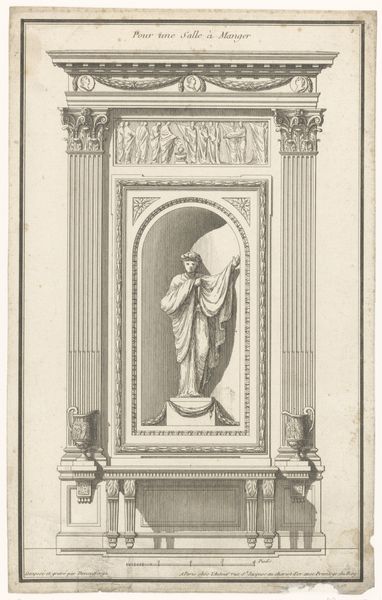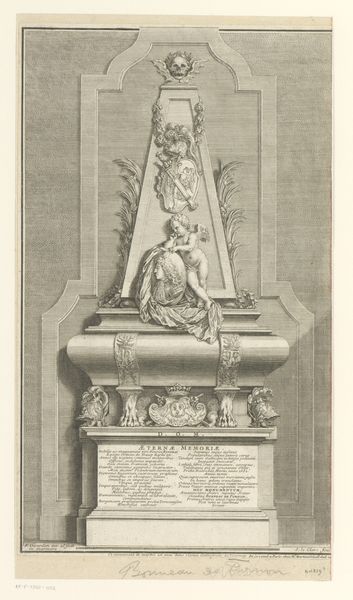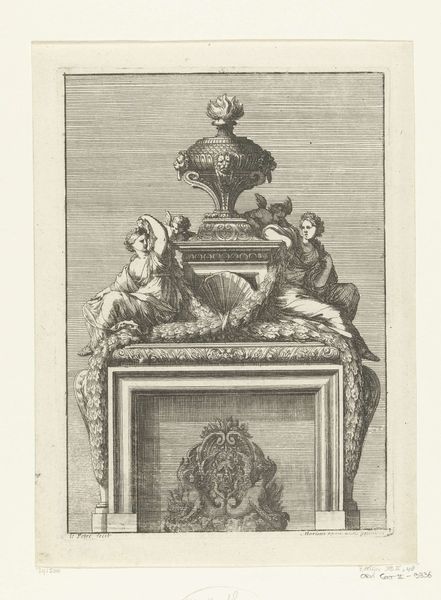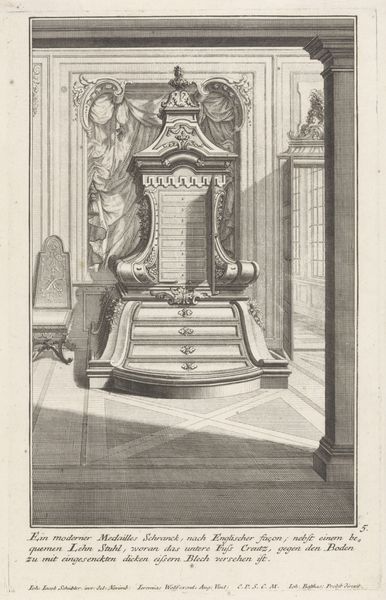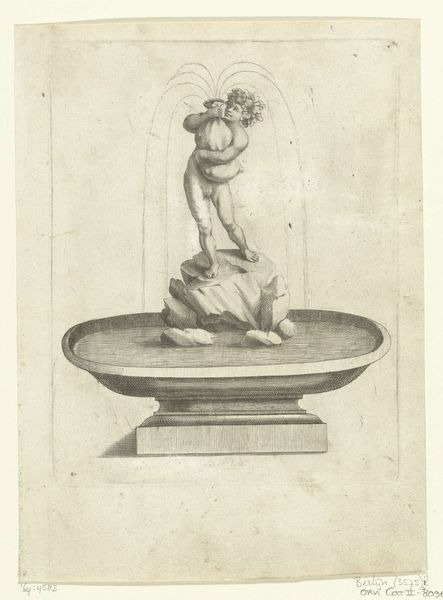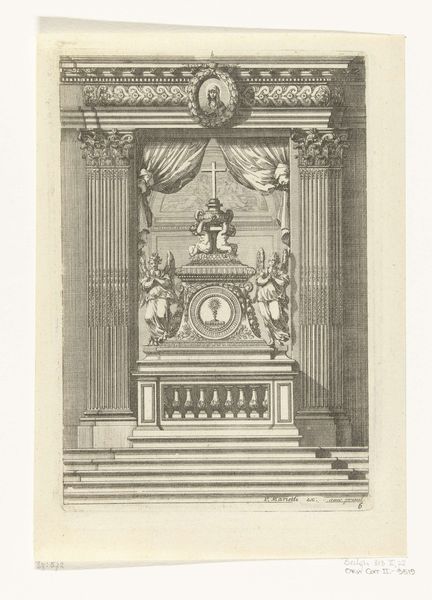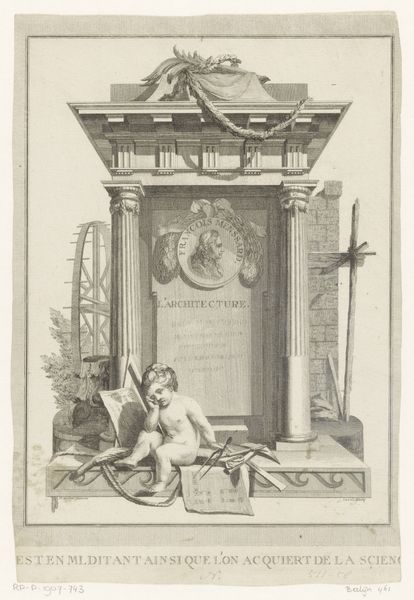
engraving
#
portrait
#
baroque
#
old engraving style
#
figuration
#
ancient-mediterranean
#
line
#
history-painting
#
engraving
Dimensions: height 300 mm, width 185 mm
Copyright: Rijks Museum: Open Domain
Editor: Here we have a historical engraving dating from around 1732 to 1734, depicting the 'Altar of the Roman Goddess Nehalennia.' It's attributed to François van Bleyswijck. The precise linework and the formal pose of the figure feel very austere. What stands out to you in this engraving? Curator: Well, it's fascinating to consider this engraving not just as a depiction, but as a commodity in itself. The act of creating this engraving involved skilled labor. Who was commissioned to create it, and under what economic conditions did they work? Was it part of a larger publication, reflecting contemporary interest in Roman history and, by extension, Roman material culture found within Dutch lands? Editor: So you are interested in understanding this engraving in the context of 18th-century labor practices. I wonder who consumed images like this? Curator: Precisely! Was this aimed at scholarly circles, fueling antiquarian interests, or did it reach a wider audience through popular publications? The means of reproduction and distribution matter. This wasn’t simply a detached artistic rendering. It implicates socio-economic factors. The consumption of these images indicates wealth and perhaps a fascination with antiquity to help give weight and validation to this burgeoning trading superpower. Editor: That really reframes my thinking! The value lies not only in what’s represented, but also in how the image was produced, circulated, and ultimately consumed. Thanks. Curator: Absolutely. Remember, art always embodies tangible processes, social conditions and economics in production, circulation and eventual interpretation of meaning. These engravings served as valuable artifacts in shaping cultural memory in 18th-century Europe.
Comments
No comments
Be the first to comment and join the conversation on the ultimate creative platform.
